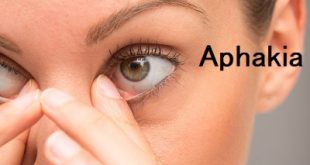What is Exotropia?
Exotropia is a type of strabismus (eye misalignment), where one eye turns, or deviates, outward (away from the nose). The deviation may be constant or intermittent, and the deviating eye may always be one eye or may alternate between the two eyes. The deviation or eye turn may occur while fixating (looking at) distant objects, near objects, or both. Exotropia is sometimes called wall-eyed (however this is technically reserved for a rare form of bilateral strabismus called internuclear ophthalmoplegia). It is a form of strabismus where an eye deviates outward. It is the opposite of esotropia and occurs intermittently or constantly. Patients with moderate or severe exophoria are more likely to develop intermittent exotropia.
Types of Exotropia
It is generally classified by its type.
Congenital exotropia
Congenital exotropia is also called infantile exotropia. People with this condition have an outward turning of the eye or eyes from birth or early in infancy.
Sensory exotropia
Poor vision in the eye causes it to turn outward and not work in tandem with the straight eye. This type of exotropia can occur at any age.
Acquired exotropia
This type of exotropia is the result of a disease, trauma, or other health condition, particularly those that affect the brain. For example, stroke or Down syndrome may increase your risk for this condition.
Intermittent exotropia
This is the most common form of exotropia. It affects twice as many females as males.
Intermittent exotropia causes the eye to sometimes move outward, often when you’re tired, sick, daydreaming, or looking in the distance. Other times, the eye stays straight. This symptom may occur infrequently, or it can happen so often it eventually becomes constant.
What causes Exotropia?
- Genetics: Strabismus, or misaligned eyes, does run in some families.
- Eye muscle weakness: This refers to your eye muscles’ inability to control eye movements.
- Convergence insufficiency: Convergence insufficiency (CI). Eyes without CI are able to come together to see an object that is nearby. With CI, your eyes don’t come together at the right point to see the close-up object. If you have CI, you will probably have double vision or blurred vision. About 5% of U.S. children have CI.
- Nervous system conditions: Health conditions like stroke or tumors can cause exotropia.
- Extremely poor vision: Having low vision in your eye can cause exotropia.
Exotropia, especially intermittent exotropia, sometimes has no known cause.
Is Exotropia hereditary?
Strabismus can run in families, but just because your family member has exotropia doesn’t mean you’ll have it too. You may have some other type of strabismus if you have any form at all.
Risk Factors
All types of strabismus, including exotropia, are more common in people with handicaps, including Down Syndrome, cerebral palsy and craniofacial dysostosis. They occur in:
- Nearly 50 percent of people with Down Syndrome
- 44 percent of people with cerebral palsy
- 90 percent of people with craniofacial dysostosis
Craniofacial dysostosis is a condition characterized by premature fusion of fibrous joints, or sutures, between some bones in the skull. These fibrous joints allow an infant’s head to grow and expand, eventually fusing to form the skull.
Children born prematurely or with a low birth weight carry a higher risk of developing strabismus. This ocular defect is also more common in families where a parent or siblings has it. However, it is unclear whether the condition itself or the underlying issues are genetic.
What are the symptoms?
Symptoms of exotropia may be exacerbated by prolonged reading, desk work, and computer use.
The most common symptoms are:
- Outward eye turn
- Blurred vision
- Diplopia (double vision)
- Eyestrain
- Headaches
- Avoidance or inability to focus while reading
- Motion sickness
If you experience any of these symptoms contact an eye doctor near you, to help treat it.
Complications
This condition can also lead to complications. The following may be a sign of exotropia:
- Headaches
- Problems reading
- Eyestrain
- Blurry vision
- Poor 3-D vision
Nearsightedness is also common in people with this condition. According to a study published in the American Journal of Ophthalmology, over 90 percent of children with intermittent exotropia become nearsighted by the time they’re 20. The study notes that nearsightedness developed regardless of whether or not children were treated for the condition.
How do diagnosis a person with Exotropia?
Visual acuity measurement- Visual acuity might be normal or abnormal. Diminished vision may either be due to a refractive error, pathology such as cataract or retinal disorders, suppression, or a combination of these factors. Visual acuity measurement in younger children is more challenging. There are special charts and devices for this purpose and require a great deal of patience.
Cycloplegic refraction: It is an objective determination of the true refractive error, by elimination of the effect of accommodation. This is achieved by paralyzing the ciliary muscle with cyclopentolate eye drops or atropine eye ointment. These drugs also cause dilatation of the pupil making it easier for the doctor to examine the retina.
- Slit lamp exam – This test checks for any diseases or abnormalities in the anterior portion of the eye.
- Fundus (retina) examination – It is also referred to as fundoscopy, and is used to view the eye’s interior portion, involving assessment of the retina, optic nerve, blood vessels, and other features:
- Measurement of the amount of deviation
- Assessment of movement of the eyes in various directions of gaze
- Check for double vision, and if present, determine the type
- Determine the degree of binocular vision that is present –
- Check for ability of fusion of the images of the 2 eyes
- Check for depth perception
- Check for suppression
- Check for abnormal retinal correspondence
How do you treat Exotropia?
It can be managed both by non-surgical and surgical treatments depending upon the condition of patient.
Non-surgical methods
- Correction of refractive error: Refractive errors like myopia, astigmatism, and high degrees of hypermetropia need to be corrected both for improvement of vision as well as to help in reducing the stimulus for exotropia. Some eye doctors prescribe additional minus lenses to stimulate accommodation (which is always accompanied by convergence) to help in controlling the outward deviation. This may be useful in delaying surgery in some people.
- Orthoptic treatment: makes use of fusional training exercises. Small intermittent deviations respond better than large and constant deviations.
- Occlusion technique: This technique is beneficial for use in very young children.
Patching the dominant eye or alternate patching of either eye is performed to interrupt and reduce the progression of this condition. Continued part-time patching (2-4 hours per day) helps the brain stop using abnormal neurological pathways while encouraging the normal neurological pathway. This technique is not usually effective for long, and in some patients can result in progression of the exotropia.
Prism therapy– Base-in-prisms (prisms incorporated into spectacles with the base of the prism towards the nose) are extremely helpful in improving the appearance of the eyes and facilitating the patient’s communication and interaction with others. It alleviates difficulties associated with misalignment. It is useful for older patients with limited fusional capabilities.
Surgical correction
Surgery is generally considered only after unsatisfactory non-surgical approaches. The goals of surgery are restoration of alignment and binocular function.
How can I prevent exotropia?
You can’t prevent exotropia.
Outlook / Prognosis
What can I expect if I have exotropia?
The outlook for people with exotropia is good in terms of vision and depth perception. However, many people do experience recurrences of it.
If you’ve had treatment for exotropia, you’ll probably need follow-up appointments.
 Diseases Treatments Dictionary This is complete solution to read all diseases treatments Which covers Prevention, Causes, Symptoms, Medical Terms, Drugs, Prescription, Natural Remedies with cures and Treatments. Most of the common diseases were listed in names, split with categories.
Diseases Treatments Dictionary This is complete solution to read all diseases treatments Which covers Prevention, Causes, Symptoms, Medical Terms, Drugs, Prescription, Natural Remedies with cures and Treatments. Most of the common diseases were listed in names, split with categories.







